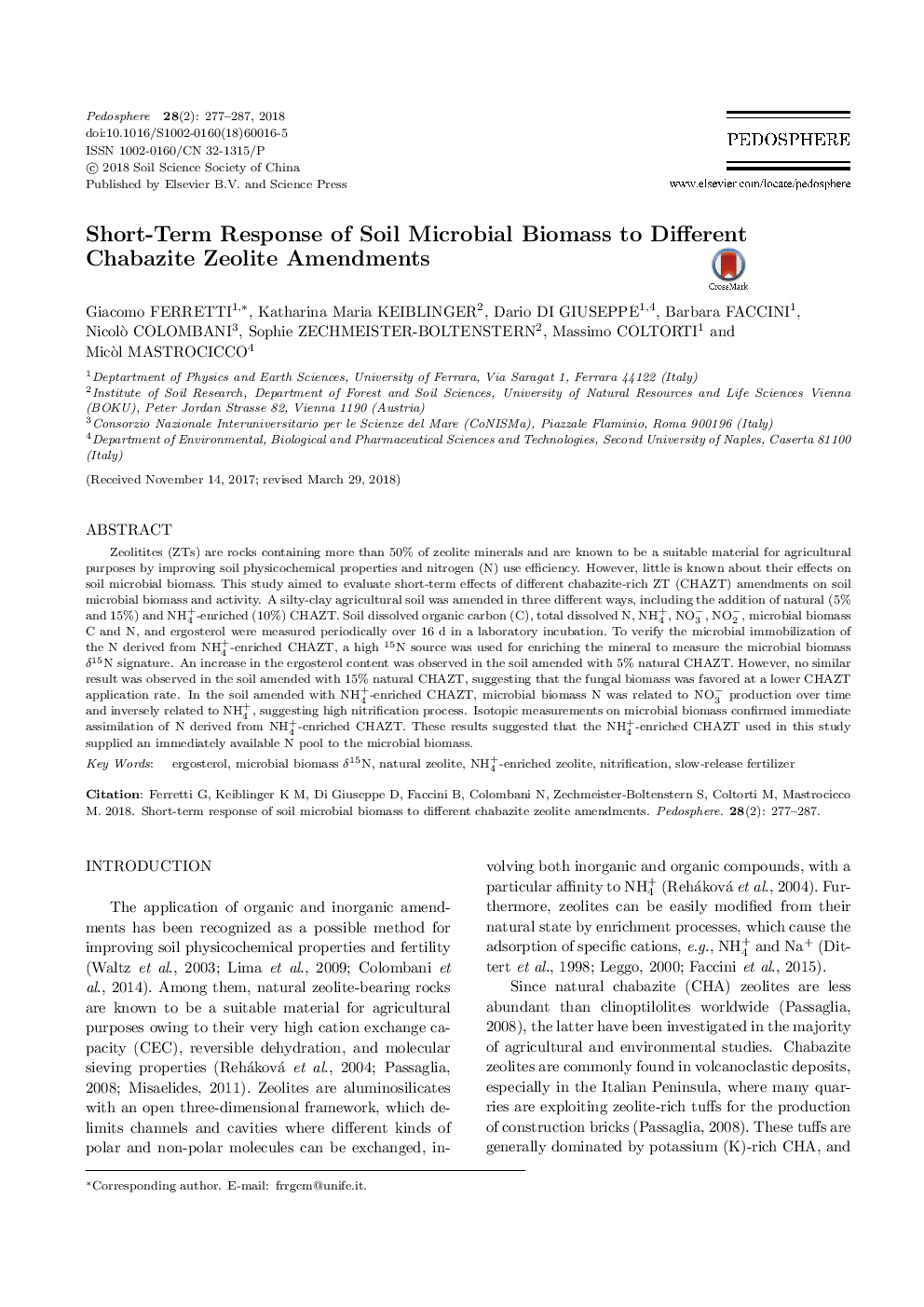| Article ID | Journal | Published Year | Pages | File Type |
|---|---|---|---|---|
| 8895387 | Pedosphere | 2018 | 11 Pages |
Abstract
Zeolitites (ZTs) are rocks containing more than 50% of zeolite minerals and are known to be a suitable material for agricultural purposes by improving soil physicochemical properties and nitrogen (N) use efficiency. However, little is known about their effects on soil microbial biomass. This study aimed to evaluate short-term effects of different chabazite-rich ZT (CHAZT) amendments on soil microbial biomass and activity. A silty-clay agricultural soil was amended in three different ways, including the addition of natural (5% and 15%) and NH+4-enriched (10%) CHAZT. Soil dissolved organic carbon (C), total dissolved N, NH+4, NOâ3, NOâ2, microbial biomass C and N, and ergosterol were measured periodically over 16 d in a laboratory incubation. To verify the microbial immobilization of the N derived from NH+4-enriched CHAZT, a high 15N source was used for enriching the mineral to measure the microbial biomass δ15N signature. An increase in the ergosterol content was observed in the soil amended with 5% natural CHAZT. However, no similar result was observed in the soil amended with 15% natural CHAZT, suggesting that the fungal biomass was favored at a lower CHAZT application rate. In the soil amended with NH+4-enriched CHAZT, microbial biomass N was related to NOâ3 production over time and inversely related to NH+4, suggesting high nitrification process. Isotopic measurements on microbial biomass confirmed immediate assimilation of N derived from NH+4-enriched CHAZT. These results suggested that the NH+4-enriched CHAZT used in this study supplied an immediately available N pool to the microbial biomass.
Related Topics
Life Sciences
Agricultural and Biological Sciences
Soil Science
Authors
Giacomo FERRETTI, Katharina Maria KEIBLINGER, Dario DI GIUSEPPE, Barbara FACCINI, Nicolò COLOMBANI, Sophie ZECHMEISTER-BOLTENSTERN, Massimo COLTORTI, Micòl MASTROCICCO,
